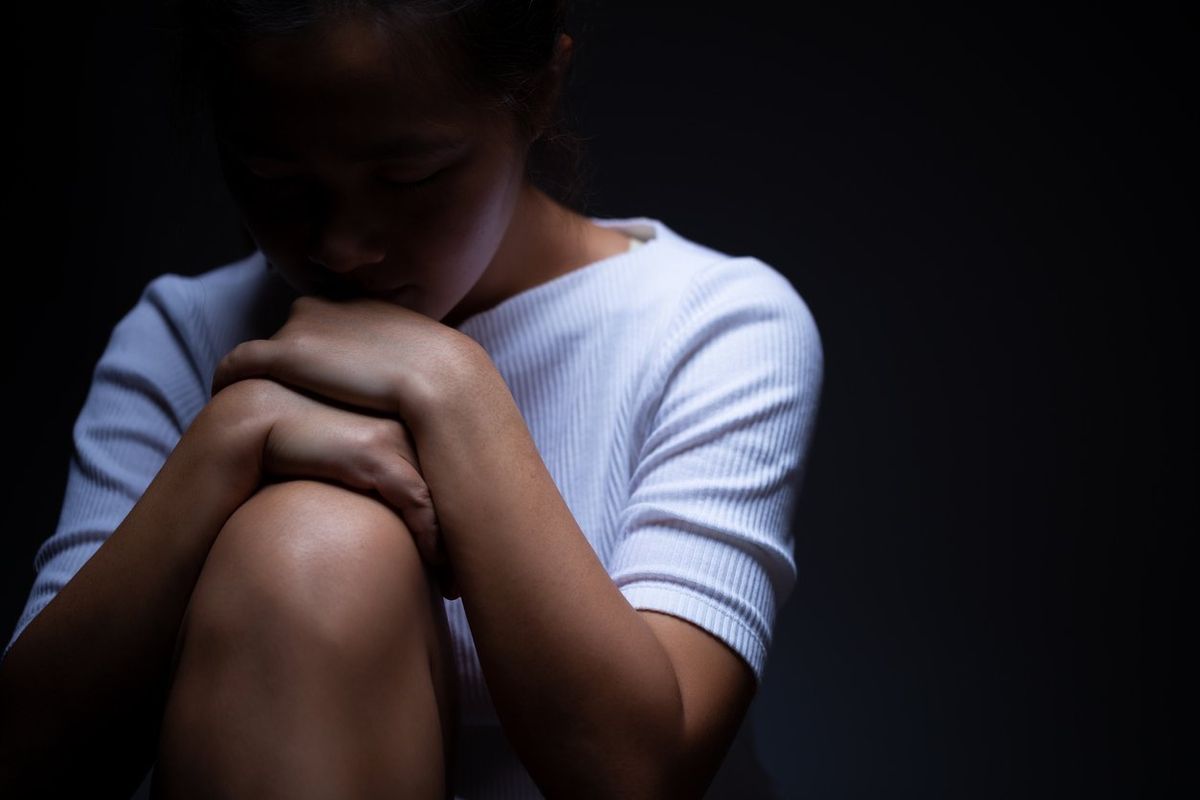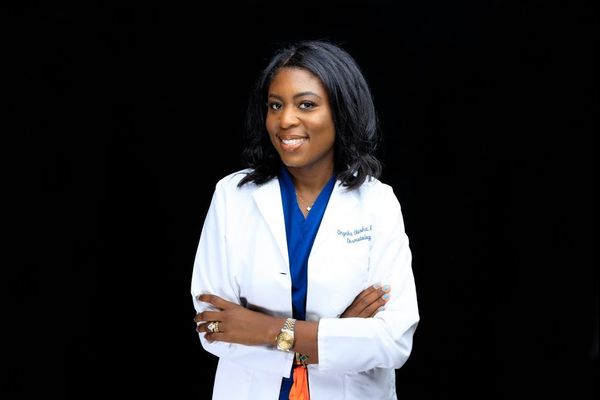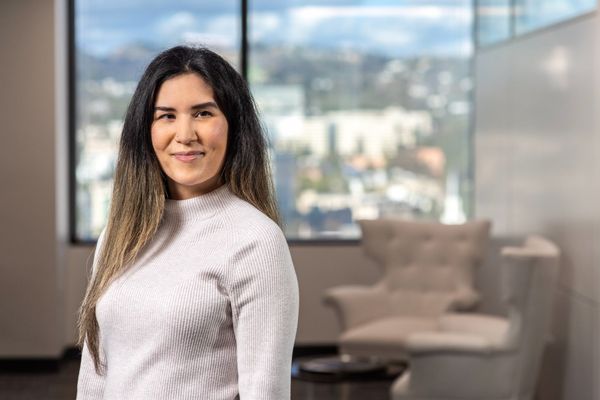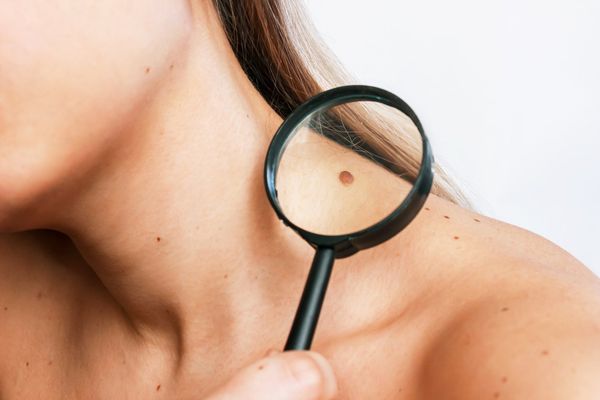As told to Nicole Audrey Spector
When I first noticed the lump on my bikini line, my instincts told me that something wasn’t right, so I promptly made a doctor’s appointment. I was in college at the time, so the campus health center was the place to go.
The doctor examined me and assured me that the lump was just an inflamed hair follicle — nothing in need of treatment — and sent me on my way. Over the months, the lump didn’t go away, and in my gut, I still knew something wasn’t right. I’d had inflamed hair follicles in the past and this felt deeper, stranger. It also seemed to be getting bigger, over time.
So I kept going back to the doctor — and kept being told it was nothing to worry about. I requested to see an OB-GYN. She took a look at the lump and said, “It’s an inflamed lymph node. If it doesn’t bother you, don’t bother it.”
Graduation came — an exciting, hectic time. I didn’t forget about the lump; but I got lost in the momentum of the transition. And after all, I was fine, right? A healthy, 22-year-old woman. All the doctors had said so.
Shortly after I graduated, I accompanied my mother to her routine mammogram screening. On display in the technician’s space was a mold of a breast with an example of a malignant lump. The malignant lump was described as “firm,” “slow growing,” “painless.”
I thought instantly of the lump on my bikini line. It checked all the boxes for a malignancy based on those qualifiers.
I made an appointment with my primary care physician, who referred me to a surgical oncologist. The word “oncologist” alarmed me. Why would a cancer specialist need to be involved?
“I’m sure it’s not anything,” my PCP assured me. “I’d just rather be safe than sorry.”
So I underwent surgery to have the mass (which wound up being a lymph node) removed and biopsied. I remember wanting to see it, so they showed it to me after: It looked like a deep brown colored egg.
I knew it was bad news as soon as I saw the surgeon’s face when I returned for my results. Ahead of the surgery we’d been friendly with one another and joking around. Now he could scarcely look me in the eye and the mood was tense and solemn.
“Jackie, you have stage 3 melanoma,” he said.
My first thought was rooted in disbelief: I’m not a fair-skinned, middle-aged Caucasian woman. How could I have melanoma?
After getting the diagnosis, I met with a medical oncologist who laid out my treatment options. I could go for immediate treatment, which would entail removing a chain of lymph nodes and some fatty tissue, along with whatever else was needed depending on whether or not the cancer had spread, followed by harsh systemic immunotherapy which would require me to put off my plans for grad school as I’d be too sick to attend; or I could choose to watch and wait. This would mean doing blood work and scans to rule out the metastasis of cancer elsewhere.
Further testing revealed that the cancer had not spread, so I opted to watch and wait. I went off to grad school.
Three years later, I discovered another lump in my bikini line. It was like Groundhog’s Day. The same thing all over again. Only this time I knew exactly what to do. I got a referral to a surgeon who performed a fine needle biopsy.
The biopsy revealed melanoma cells. Watching and waiting was over. The time for “harsh and toxic” treatment had arrived.
I sought opinions from several doctors and specialists. The outlook was grim. At one point I was told it would be a miracle if I survived another five years.
I had a total right groin lymphadenectomy, and fortunately qualified for a clinical trial during which I had to self-administer weekly immunotherapy injections, and completed four brutal months of daily pelvic radiation treatment.
Fortunately, the treatments were a success. As of 2008, I have had no evidence of cancer in me. But some of the effects of what I went through are everlasting.
As a result of both surgery and radiation, I suffer from lymphedema in my right leg. I use a compression pump and wear a compression stocking on my right leg during the day and a compression garment at night. I have had numerous surgeries to attempt to resolve the effects of the lymphedema, but none have been successful.
As a survivor of melanoma, I am active in melanoma advocacy work. But it can get lonely and frustrating. I’m typically the only Black person in these environments, and there’s a lot of pale-skinned rhetoric that clouds and confuses the educational mission at hand and erases my experience. For instance, people often just assume that I had acral lentiginous melanoma, a type of skin cancer that, though rare, is slightly more common among people of color than cutaneous melanoma.
There’s a widespread and completely misguided belief that people with darker skin are not at risk for melanoma. There’s also a dangerous and wrong assumption that in order to get melanoma, you must have been a devout tanner — something I have never been.
I’m not angry or bitter about these preconceits; after all, I once believed them, too. I’m not even resentful toward my initial doctors, who were so nonchalant about what turned out to be a deadly cancer. I can see why they weren’t concerned … I was otherwise young and healthy. I don’t harbor any ill will.
But now that I am a survivor of melanoma, I am determined to shatter biases. I want people to understand that this type of cancer can come for anybody. We all have skin. We all have melanocyte cells. Some of us just come in darker shades.
I notice that a lot of people are scared to go in to get moles and other suspicious skin lesions checked out because they’re worried it could be something bad, like cancer. But early detection can make all the difference. So please, protect your skin when you’re in the sun and get your annual skin cancer checkups.
If detected early, melanoma can be curable. I presented with stage 3 disease. I am not considered "cured." I am "NED" or “no evidence of disease.” Because I had late-stage disease, there is always the possibility of recurrence, which is why I preach early detection and prevention.
Melanoma Resource List
HealthyWomen Resources
- The ABCDEs of Spotting Melanoma
- Why Are People of Color More Likely to Die from Skin Cancer?
- Melanoma 101 — Risk Factors, Diagnosis, Stages and Treatment
- I Was Wrong to Think Ethnicity Made Me Immune to Skin Cancer
- What Is Melanoma? A Reel by Dr. Obioha
En Español
- El ABCDE para identificar melanomas
- Melanoma 101 — Risk Factors, Diagnosis, Stages and Treatment
- Estaba equivocada al pensar que la etnia me hizo inmune al cáncer de piel
- ¿Por qué las personas de color tienen más probabilidades de morir de cáncer de piel?
Additional Resources
- Melanoma - Symptoms and causes
- Melanoma Skin Cancer | Understanding Melanoma
- Racial Disparities in Skin Cancer Diagnosis, Prognosis, and Treatment - Oncology Nurse Advisor
- How to prevent skin cancer (aad.org)
- Black Derm Directory | BDD | Skin of Color Dermatology
- How to Worship the Sun Without Getting Burned ›
- 10 Things You Must Know to Enjoy the Sun Safely ›
- I Grew Up Thinking I Was Immune to Skin Cancer Based on My Ethnicity. I Was Wrong. ›
- What Is Melanoma? A Reel by Dr. Obioha - HealthyWomen ›
- What Is Melanoma and Why Are Melanoma Rates Increasing? - HealthyWomen ›
- ¿Qué es el melanoma y por qué están aumentando sus tasas de incidencia? - HealthyWomen ›
- Estaba equivocada al pensar que la etnia me hizo inmune al cáncer de piel - HealthyWomen ›
- Metastatic Melanoma - HealthyWomen ›
- Melanoma metastásico - HealthyWomen ›
- Types of Melanoma - HealthyWomen ›
- Tipos de melanoma - HealthyWomen ›
- Immunotherapy for Melanoma - HealthyWomen ›
- Inmunoterapia para el melanoma - HealthyWomen ›





